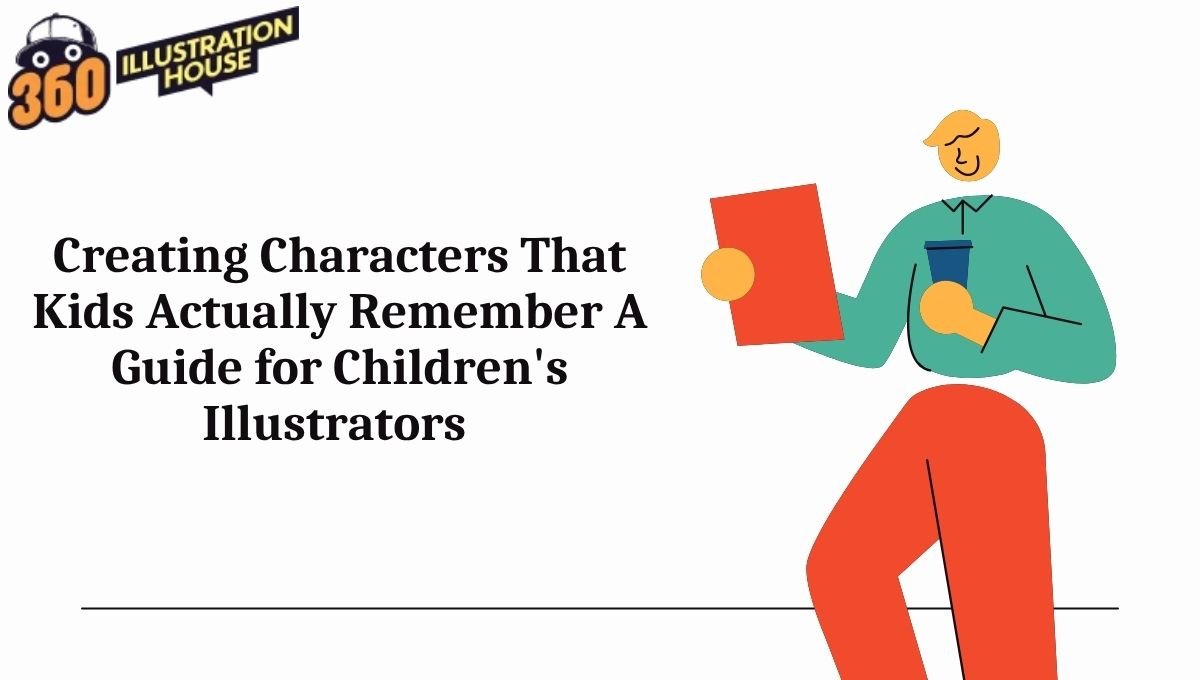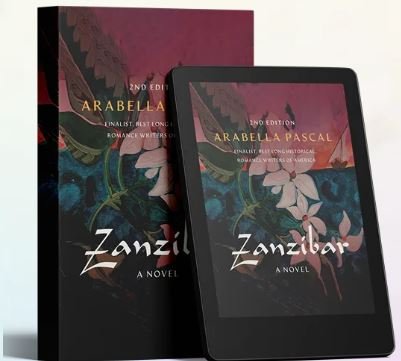Children remember characters more than plotlines. A good character can shape how a child feels about a book, whether they reread it, and whether they connect to its message. In the world of children’s illustrations, the emotional bond created between the child and the character is what drives lasting engagement. That makes strong character design a priority for both authors and illustrators.
This blog explores how to create characters that kids remember. There are multiple things that we will be covering in our post. So sit tight and maybe open sticky notes on your phone and start jotting down.
Key Takeaways
- Emotion drives memory: Children remember how characters made them feel more than the story itself. Not perfection, but the emotional impact, is what builds a long-term connection.
- Simplicity supports recognition: Characters with bold shapes, expressive faces, and consistent colors are easier for young readers to recognize and recall.
- Adapt the design to age: Different age groups understand visuals in different ways. Adjust clarity, expression, and detail to match cognitive and emotional growth from toddler to middle-grade.
- Small visual cues matter: Props like toys, backpacks, or hair changes signal personality and growth. These little details are essential in both standalone stories and book series.
- Characters must work everywhere: Today’s characters need to appear consistently across print, digital media, merchandise, and social platforms. Quick recognition and consistent design are essential.
- Feelings come first: Striking and attractive characters feel real. In children’s illustrations, it’s the emotional attachment that makes a character unforgettable.
What Makes a Character Memorable to a Child?
Before we explore what makes a character or picture really stick in a child’s mind, it’s important to know how powerful good illustrations can be for young kids.
A 2024 study called “An Exploration of the Impact of Quality Illustrations in Children’s Picture Books on Preschool Student Narrative Ability” found that preschoolers who looked at high-quality illustrations showed big improvements in how they use language, their vocabulary, understanding of stories, and how they tell stories back.
In short, the right images don’t just make a page look nice; they really help a child’s ability to tell stories.
So if you want to hire an affordable comic book illustrator to create illustrations like these—ones that stick in a child’s memory – then here are a few things you must consider.
- Emotional impact: A character that makes them laugh, feel safe, or brave stays in their memory.
- Visual clarity: Big shapes, bright colors, and unique features help kids instantly spot and remember a character.
- Repetition: Characters that appear in sequels or are easy to draw stick around longer in a child’s mind.
- Personal reflection: Kids often see themselves, their friends, or their dreams in the characters they love.
Example: Max from “Where the Wild Things Are” is iconic. His crown, wild outfit, and bold actions make him both easy to recognize and emotionally relatable.
7 Tips to Design Children’s Illustrations That are Memorable
1. Understanding Children as a Visual Audience
Children understand visuals based on their stage of growth, and that changes quickly as they age.
- Ages 0–3 (toddlers): Clarity matters most. They are attracted to simple shapes, high contrast, and expressive faces. These elements support early recognition and provide emotional comfort.
- Ages 3–5 (preschoolers): Kids begin to understand body language. A slouch, wide eyes, or raised arms tell more than words.
- Ages 6–8 (middle-grade): Children develop the ability to start picking up on subtle feelings, like nervousness behind a smile or quiet pride in a stance.
If you’re not sure how to make illustrations for kids of different ages, think about getting help from custom children’s book illustration services. They can help you clarify your ideas and make sure the images are suitable for the age group you’re targeting.
2. Shape Language
The shape of a character influences how children feel about it. Round shapes feel safe and friendly to kids, while angular ones suggest energy or mischief. Strong, recognizable silhouettes also matter; if a child can identify a character just by its outline, it’s likely to stick.
3. Start with Strong Emotional Anchors
Children feel emotions before they think logically. This means your character needs to express a clear and relatable feeling. For this, you must:
- Give the character a strong expression (joy, fear, surprise, determination).
- Use large eyes or exaggerated facial features to make emotion more readable.
- Situate the character in familiar, emotionally charged situations: first day of school, losing a toy, helping a friend.
You need to do this because, according to developmental psychologists, children ages 2–7 are in the preoperational stage. This is when emotional cues dominate cognitive processing. Your character’s expression might be more than the entire storyline.
4. Color Use
Colors play an important role in children’s illustrations. Bright, consistent color palettes support memory retention and signal personality traits, like warm reds for cheer or cool blues for calm. Try to keep the same colors in different scenes. Using the same colors makes it easier for young readers to understand the story without getting confused.
5. Repetition Builds Recognition
Kids need to see a character many times to really know and understand them. Using the same outfits helps make the character feel familiar throughout the book. It’s also a good idea to use the same poses or facial expressions in different parts of the book.
Adding a special saying or a visual element, like always having a blue balloon, makes it easier for even the youngest readers to recognize the character as they flip through the pages.
6. Details That Reveal Personality
Accessories and clothing tell us who a character is. Whether it’s mismatched socks, oversized glasses, or a favorite plush toy, these small elements become visual anchors for a child. Even when the backstory isn’t told outright, props suggest it. A bunny with a red umbrella isn’t just cute, it’s unforgettable.
7. Distinctive Silhouettes Win Every Time
This trick comes straight from the world of animation. But you’ll be surprised to know that it works perfectly for children’s illustrations as well. For example, SpongeBob SquarePants. You know how his simple, rectangular body and spiky edges make him instantly recognizable, even without color or facial features.
A unique shape helps kids remember characters better because their brains notice big outlines before small details. When a character looks different—like having a crooked hat or floppy ears—it sticks in a child’s mind longer. This makes it easier for kids to recognize and connect with the characters, even quickly. It also helps with selling things like stickers and plush toys, which can be easily recognized without lots of detail.
Types of Characters Kids Remember Best
According to custom comic book illustration services, children specifically love these four kinds of characters:
| Type | Why They Stick | Examples |
| Animal Protagonists | Offer humor and emotional safety | Pete the Cat, The Gruffalo |
| Human Kids | Encourage empathy and self-identification. | Junie B. Jones, Ada Twist |
| Fantasy Creatures | Spark imagination and wonder | Dr. Seuss characters, Dragons Love Tacos |
| Inanimate Objects with Faces | Surprise and delight | Spoon, The Day the Crayons Quit |
Conclusion
A lasting character isn’t just well-drawn—it feels real. Kids may forget the storyline or dialogue, but they’ll remember laughing with a character, feeling braver because of them, or feeling comforted by their presence. That emotional connection stays long after the book is closed.
The characters that live in a child’s heart—whether they’re a dragon, a sock, or a quiet kid with big dreams—are the ones that spark empathy, imagination, or a sense of friendship. That’s the real goal for every illustrator and author working in children’s illustration today.
FAQs
- Why do children connect more with illustrated characters than storylines?
Children respond faster to visual and emotional cues than to a complex plot. In children’s books, characters act as emotional touchpoints; they remember the feeling more than the action.
- How can color psychology improve character design in children’s illustrations?
Color influences mood and memory. Warm tones like red and yellow can signal energy or comfort, while cool tones offer calm. Consistent color schemes help reinforce recognition.
- What role do props play in children’s illustrations?
Props help define personality and act as memory aids. Items like a red umbrella, mismatched shoes, a well-loved toy, or a backpack with stickers add personality and backstory without extra words.
- How do illustrators balance art and story in children’s books?
Strong illustrations carry meaning through posture and expression. A character’s pose or look can hint at plot or feeling even before the reader looks at the text.
















Leave a Reply